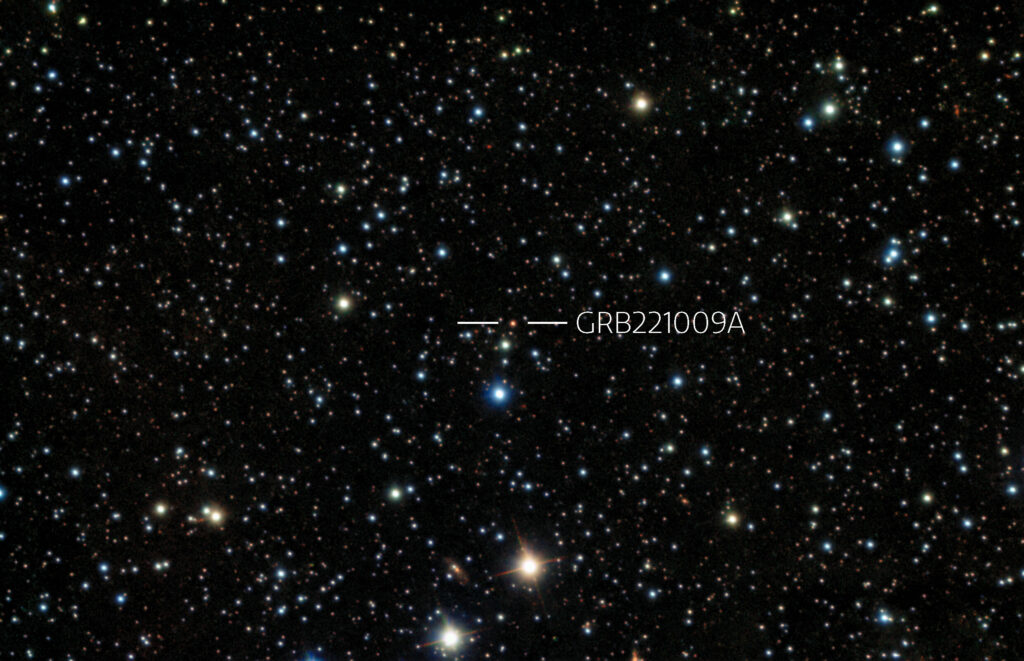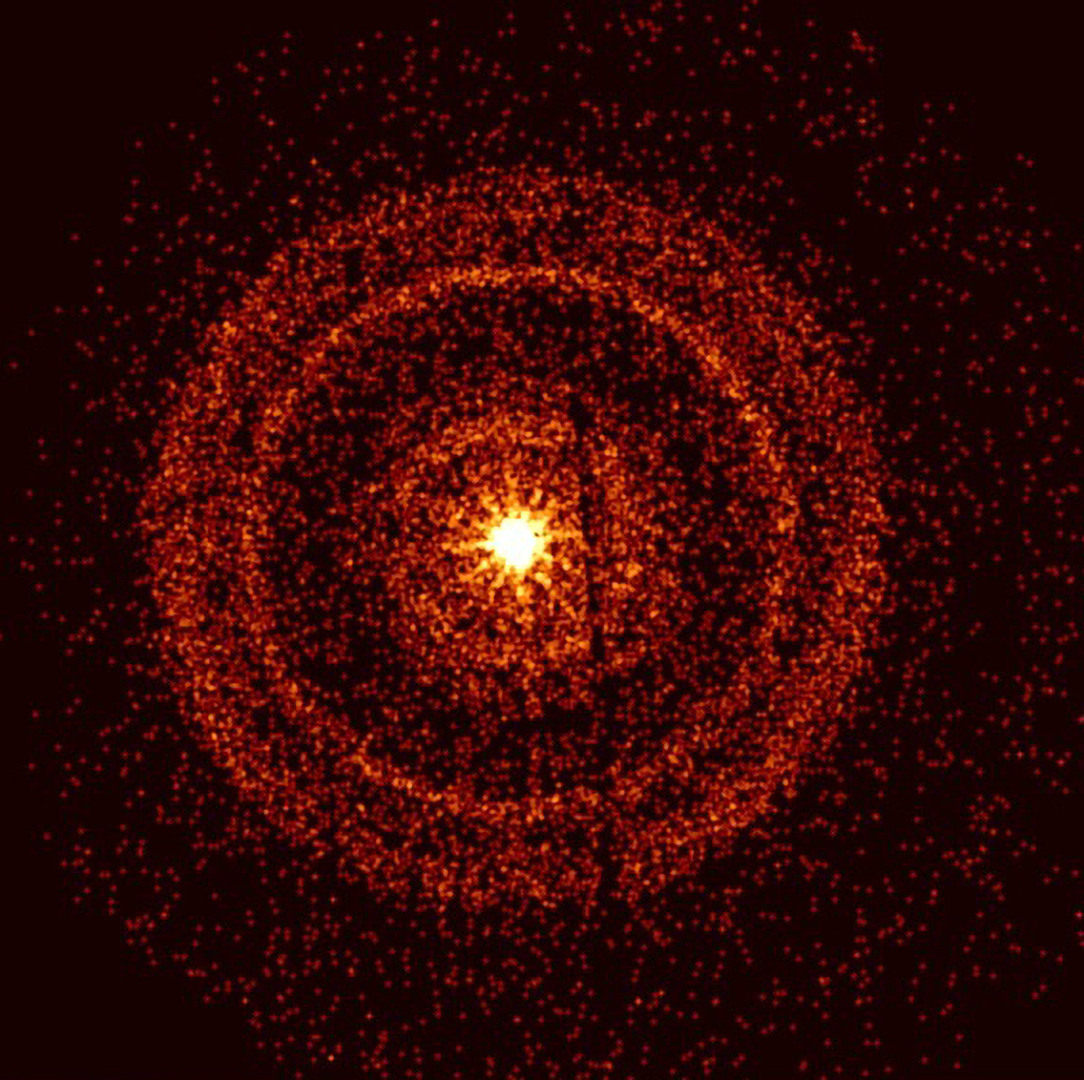NASA has published a series of images taken by the Fermi and Swift space telescopes. They demonstrate the afterglow of the gamma-ray burst GRB 221009A, already called by astronomers one of the most powerful in the history of observations.

Gamma-ray burst GRB 221009A was recorded on October 9. Its source was in the constellation of Sagitta. According to astronomers, the gamma-ray burst was generated by the collapse of a supermassive star, which led to the birth of a black hole.
GRB 221009A has attracted the attention of scientists for a number of reasons. Firstly, it flared up at a distance of 1.9 billion light-years from Earth, which is relatively small by the standards of such events. Secondly, GRB 221009A surprised scientists with the amount of released energy. It became one of the brightest bursts in the gamma-ray range in the entire history of observations. In the X-ray range, GRB 221009A shone several hundred times brighter than the brightest of the previously observed similar sources.

It is not surprising that the telescopes observing GRB 221009A managed to make a number of interesting images of its afterglows. One of them was obtained by the NASA-owned Swift Observatory. It demonstrates how GRB 221009A looked an hour after the burst. The characteristic bright circles around the source were formed due to the scattering of X-rays on dust particles in our galaxy.

Also, NASA has published an animation made up of images of the Fermi gamma-ray observatory. It demonstrates the flash and attenuation of GRB 221009A (center of the image). The diagonal stripe crossing the left part of the frame corresponds to gamma radiation from the Milky Way. In total, the animation covers over ten hours of observations of GRB 221009A.
According to https://www.nasa.gov
Follow us on Twitter to get the most interesting space news in time
https://twitter.com/ust_magazine

